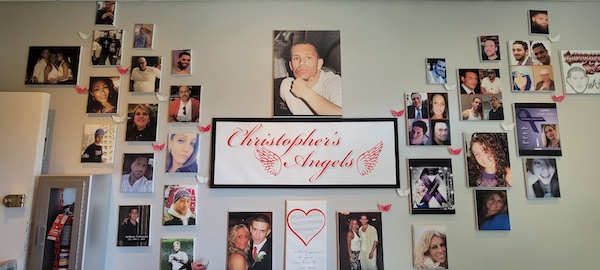
PROSPECT HEIGHTS — Staten Island has often been called “ground zero” in New York City’s opioid crisis. Despite the fact that it’s the smallest borough in terms of population, Staten Island sees an outsized number of opioid-related deaths, according to government statistics.
Yet, when officials announced the distribution formula for the first round of funding stemming from a $1.9 billion settlement New York state reached in a multistate lawsuit against pharmaceutical companies that manufacture opioids, Staten Island was left off the list of recipients.
The first round of funding — $150 million — will be distributed among NYC Health + Hospitals, the Department of Mental Health and Hygiene, and the Office of the Chief Medical Examiner. The funds will go toward strengthening existing services, boosting workforce capacity, and supporting families who have lost loved ones, Mayor Eric Adams announced in June.
“With the funding secured by Attorney General [Letitia] James from Big Pharma, we will address the multiple crises that have stemmed from the opioid epidemic,” said Adams, who added that expanding treatment options is an important part of the plan.
Ostensibly, Staten Island is missing out because the borough doesn’t have a public hospital run by NYC Health + Hospitals, Staten Island District Attorney Michael McMahon said.
“This tragic twist of irony is emblematic of the city’s narrow-minded, top-down approach to solving our biggest problems, none more urgent than the drug crisis that is claiming more lives than ever before,” McMahon said in a statement at an NYC Health + Hospitals board meeting on March 21.
The city’s logic doesn’t impress Ann Marie Perrotto, president and co-founder of Christopher’s Reason, a Staten Island-based treatment center that helps approximately 200 clients a year and boasts an 85% recovery rate.
“They pick and choose who they want to distribute to. This is the blood money of people who died of overdoses. Their families should have a say in where the money goes,” said Perrotto, whose center is named in memory of her son Christopher, who died of an overdose in 2011.
Perrotto, who said a large number of overdoses are related to opioids, called on the city to distribute at least some of the funding to grassroots programs like hers and not favor larger institutions. “My clients say that when they go to a place that is huge, they seem like a number. They seem like the burden,” she said, adding that humanity is a hallmark of her program.
In 2021, Staten Island had the second-highest rate of overdose deaths per 100,000 residents at 39.3, topped only by the Bronx, which had 70.6 overdose deaths per 100,000 residents. Manhattan had 32.8, Brooklyn saw 28.8, and Queens had 21.4.
Alicia Reddy, a registered nurse who founded an intervention program called Addiction Angel, said she was frustrated when she learned that Staten Island is not part of the funding formula.
“I’ve been dealing with people addicted to opioids for almost 18 years now. Staten Island was considered ‘Heroin Island’ for quite some time. People are still overdosing,” she said. “Nobody really understands the ground level of it, what I deal with on a daily basis. It’s bad.”
Reddy, who estimated that she receives 20-30 calls a day from people seeking help, said addiction doesn’t just affect the addict. It affects the entire family.
“Many grandparents are taking care of their grandchildren because their children died from an overdose. And now they’re in their 50s and 60s and being forced to raise their grandchildren,” she explained.
McMahon called the omission of Staten Island from the Big Pharma settlement funding unconscionable.
“If we were losing 2-3 Staten Islanders a week to any other cause, the response would be swift and serious,” the DA said. “Yet here we stand, on the precipice of a historic investment into our city’s response to a drug crisis that has lowered life expectancy in the United States for the first time in recorded history, and Staten Island is left on the outside looking in.”
In response, a City Hall spokesperson said the $150 million represents only the first round of funding and that there is more to come.
“This is only the first of numerous rounds of opioid settlement funds that will support lifesaving programs citywide, including on Staten Island, as we work to tackle the overdose crisis,” the spokesperson told The Tablet.
